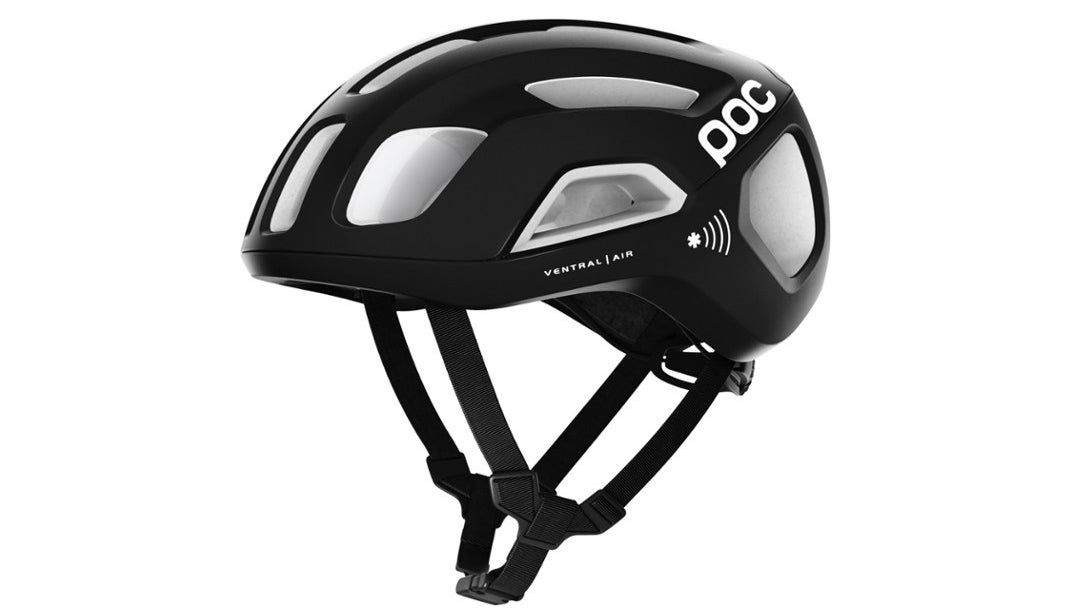If you buy through our links, we may earn an affiliate commission. This supports our mission to get more people active and outside.Learn about Outside Online's affiliate link policy
Reviewed: POC Ventral Air SPIN NFC

Price: $275
Weight: 270 g (Medium)
Rei.com
Basics: POC adds NFC (Near Field Communication) chip and SPIN technology to its proven Ventral Air road helmet for improved safety and communication with first responders.
Pros: POC proves that safety enhancements can be achieved without a weight penalty.
Cons: NFC technology isn’t currently common practice among first responders.
Related – Unboxed: Crazy New Tech from POC
Let’s dive into the helmet before tackling the NFC component: The POC Ventral Air is a lightweight, very comfortable, and well-ventilated road helmet. The unobtrusive ratchet system is minimal, functional, and provides easy adjustability both inside the helmet and with the dial. Admittedly, I was not a fan of the previous POC helmet styling, as the designs tended to be very bulbous. However, the Ventral Air is more form-fitting and—due to its truncated tail—surprisingly stylish. Where POC continues to separate itself from other brands right now is via its focus on safety. With the addition of a new patent-pending silicone pad system called SPIN (Shearing Pad INside), you get MIPS-style rotational protection without the weight penalty of an additional liner. This allows the helmet to feel, fit, and have access to precious head scratching through vents just like a traditional helmet.
POC Ventral Air SPIN NFC: What is NFC and why do I need it?
POC has embedded a NFC (Near Field Communication) chip within the rear left side of the helmet, identified with a logo, to create what they say is a “Helmet that can speak for you when you can’t.” The NFC chip can be accessed with an NFC reader placed within 20 mm of the helmet’s logo, allowing first responders to gain important health information in the event that the rider is unconscious following an accident. The Swedish app maker MyICE (In Case of Emergency) has created a free app, twICEme, that lets you upload rider information and pair it to your helmet. The process is easy, and it pairs seamlessly. The user can input multiple fields of information—including medications, emergency contacts, insurance, and even if you are an organ donor (truly just in case)—far more than you could fit onto something like a RoadID. However, this information is not security encrypted and can easily be retrieved by anyone with a smartphone who wants to scan and read your information—so reconsider leaving your helmet on your bike before going into the coffee shop. Additionally, the app allows your location to be accessed during riding for an additional layer of security.
POC Ventral Air SPIN NFC: The Takeaway
While scanning for NFC chips during accidents is not a widely adapted practice currently, MyICE has partnered with the International Commission for Alpine Rescue (mountain first responders), and I would expect more agencies to begin to recognize NFC and implement it in their emergency response. POC was an early adopter of MIPS and is likewise ahead of the trend for NFC. Admittedly, I felt a little bit like a dog that gets chipped, just in case it gets outside of the yard. That said, there is inherent peace of mind knowing that identifying information is with me, regardless of remembering to bring or wear additional pieces of identification.
The POC Ventral Air SPIN NFC could not come at a more appropriate time. While many athletes are trending towards gravel/adventure riding and adopting new levels of social distancing (i.e., solo) riding, having a piece of safety equipment that gives pertinent health information to first responders in the event of an unresponsive rider is essential.